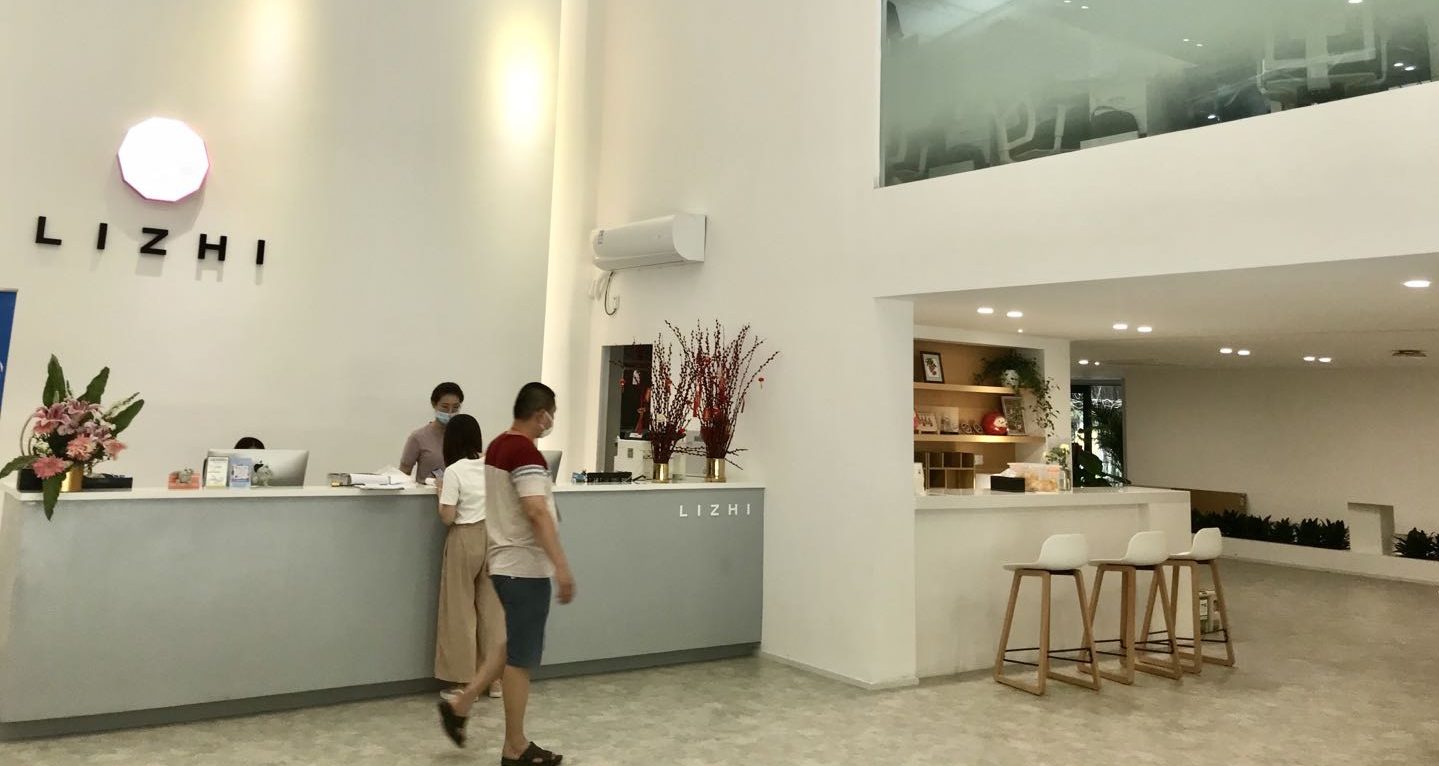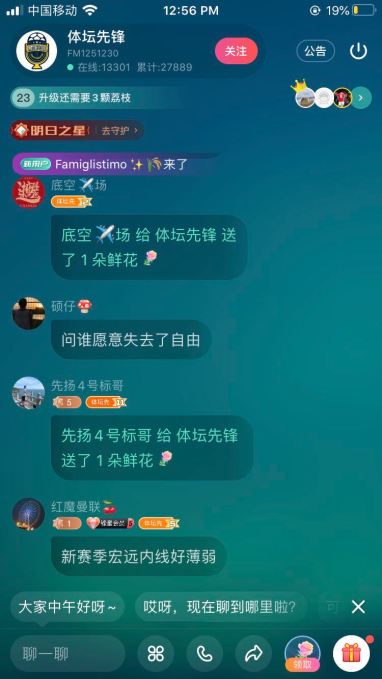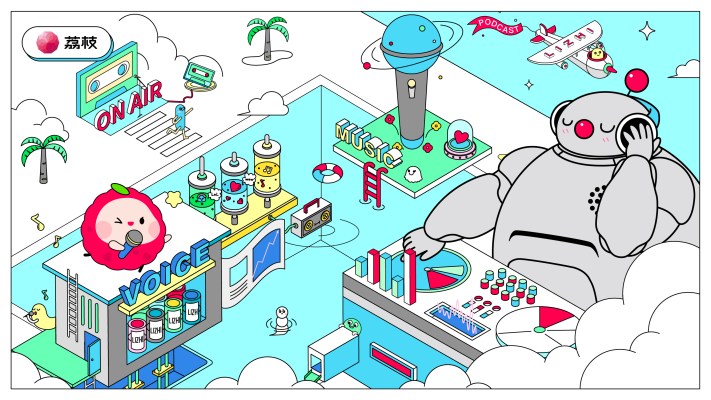For Marco Lai, the founder of Chinese podcast network Lizhi, radio has always been social.
Twenty years ago, the entrepreneur was a host at a radio station in southern China. He ran a late-night program where listeners could call in and chat about anything as they wished, often riffing on feelings, relationships or other intimate subjects. Those who couldn’t get through the phone line sent text messages that Lai would then read on air. At the time, it was a popular and promising model for radio stations, which divided the revenue earned from messaging fees with network carriers.
Now, Lai manages one of China’s largest podcast companies. Lizhi means “lychee” in Chinese, the aromatic tropical fruit from his hometown in the southern province of Guangdong. He picked up one of the red-shell fruits from a tea table in his office as he began telling me Lizhi’s story.
“I learned from my days working in radio that interaction is the best monetization model in the audio business. For years in China, the main revenue source for radio stations was these text messages,” Lai reminisced, speaking at a relaxed, slow pace that is uncharacteristic in China’s dog-eat-dog entrepreneurial world.

Marco Lai, founder and CEO of Lizhi (Photo: Lizhi)
The headquarters itself felt more like a giant, inviting coffee shop than a high-strung workplace of a Nasdaq-listed firm. Tugged away in a low-rise warehouse-turned-office in Guangzhou, the place is dotted with well-tended bonsai and staff sitting on bean bags behind glass meeting rooms.
Lai built the app for podcast production as well as consumption, capturing both the supply and demand sides. As of June, 56 million people used Lizhi monthly. Over 6 million of them were creators, and the cumulative number of podcasts uploaded to the platform hit a new record high of 215 million.
Podcasts are just one form of what Chinese industry analysts categorize as “audio content,” which also includes things like paid audiobooks and educational talks. Lizhi, along with rivals Ximalaya and Qingting, is competing in an online audio market expected to reach 542 million users by 2020, according to research firm iiMedia.
Everyone is a radio host
Lizhi launched in 2013 to fill an obvious gap in the Chinese podcast industry. There were no dedicated Android apps for podcasts at the time, so one needed an iPhone to stream shows. Instead of building an app, Lai’s team launched an “official account” on WeChat, the Tencent messenger that was becoming synonymous with the Chinese internet for the myriad of services it powered.
The official account was sort of like a Facebook Page with souped-up functions. For example, users could message Lizhi’s account like texting someone, get recommendations for shows and listen to them without leaving WeChat. The integration into a social network allowed for easy sharing, and within three months Lizhi’s account had garnered 1 million followers. Soon the standalone app Lizhi FM ensued.

Image Credits: Lizhi’s headquarters in Guangzhou (Photo: TechCrunch)
On the supply end, Lizhi built a suite of recording tools to attract creators. “For many people, the entry barriers in the podcast industry are very high. There wasn’t something to serve the entire value chain that goes from content creation to user subscription,” explained Lai.
The Lizhi app now supports functions like automatic noise reduction and volume adjustment, replacing the need for expensive audio setup and editing software. The goal is to make it easy for anyone to start recording within seconds. Unlike Apple Podcast, which in essence serves as directories for shows’ RSS feeds, Lizhi is both a content distributor and hosting service, making itself a one-stop shop for producers.
“In the U.S., podcasts are often well-polished comedies, talk shows or news programs. In China, many people have dreams to become radio hosts, so we get amateur creators who are simply reading out poems they like,” said Lai, observing the differences between the two countries.
Lizhi does attract professional producers — many of whom are Lai’s friends from the old days — but much of the app’s content comes from ordinary users. There are parents using the app to archive bedtime stories they read to their children, and teenagers expressing their affection and loyalty to their idols.
“In the PC era, most of us were content consumers. In the mobile era, our phone is by default equipped with a camera and a recorder. This brought a dramatic change to the creator community,” said Elwin Yuan, a partner at Lizhi’s early investor Morningside Venture Capital. Yuan has also backed other famed players in the user-generated content space, including Kuaishou and Musical.ly, which is now part of TikTok.
In the meantime, a UGC service also faces greater pressure in content moderation than its peers relying on a smaller pool of professional creators and license holders.
Monetizing podcasts
When it came time for monetization, Lai thought back to his radio days and how revenue from text messages was once even greater than advertising.
“This is a uniquely Chinese phenomenon. I think people have a strong desire to interact through voice,” he said as he opened a book penned by his favorite radio host, who quoted a letter that Lai had mailed to her at a time when messaging wasn’t yet an option.
Lai remade the tradition in the form of mobile live streaming. In 2017, Lizhi began letting creators run live sessions. Listeners can engage with the hosts by messaging and calling them within the app. They can also send virtual gifts like tipping someone, a lucrative and popular feature proven by China’s video streaming pioneers. Audiences purchase virtual gifts with real money, the revenue from which is then shared between the service provider and hosts.

Screenshot of Lizhi: Listeners can send real-time comments and virtual gifts to audio streaming hosts
These live sessions, or what Lizhi terms “audio entertainment,” contributed as much as 98.5% to the firm’s $102 million net revenues in the six months ended June. Meanwhile, subscriptions, advertising and other sources brought in the rest.
Despite seeing great traction in live streaming, Lai has been working to diversify monetization avenues for both podcasters and the company itself.
“Live broadcasting isn’t for everyone,” he admitted. “People need to be quick-witted and spontaneous. A good podcast producer isn’t necessarily good at live streaming, and vice versa.”
Lai envisions content subscription to be one of the main drivers for the firm’s future revenue growth. Under this model, users would pay for podcasts like they would for a newsletter. His team is also exploring various options to insert nonintrusive ads into programs while continuing to recruit creators via revenue sharing schemes. The top nonlivestreaming producers on Lizhi these days can earn up to two million yuan (about $300,000 a year), while the midrange for all creators is between 5,000 and 10,000 yuan a month.
Audio has been relatively late to monetization compared to other kinds of information services based on text or video, Morningside’s Yuan observed. That’s because, for a long time, the technology to quickly index, search, discover or distribute audio content “wasn’t quite there yet.” Now the advance of artificial intelligence is making discovery a lot easier and allowing more niche and diverse content to blossom, which is instrumental to growing a UGC platform like Lizhi.
“The key is to achieve a virtuous cycle between the monetization model and creator ecosystem,” the investor suggested.
“We are returning to our original goal this year, which is to help podcasters make money,” said Lai. In his spare time, the CEO returns to his roots, hosting a program on Lizhi to share his favorite Cantonese pop songs from the golden 1980s, many of which he had played on radio two decades ago.
